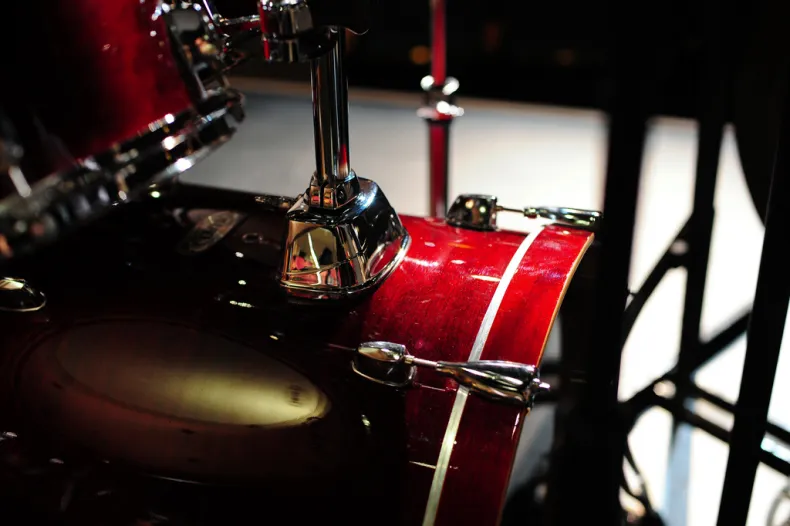Recording Real Drums In A Bad Room? [Reader Question]
Mar 17, 2011In light of my soon to be released drum recording and mixing tutorial videos, REthink Drums, I wanted to answer a recent reader question on the subject. David asked me on twitter recently…
“Should I use Pro Tools’ Strike drum plugin or record live drums in a bad room with mediocre mics?”
David brings up a very relevant issue for the typical home recording person. We usually are limited to an untreated, bad sounding spare bedroom or basement in a house for our main recording space. With many elements of recording (vocals, guitars, keys) you can get by without much issue. But recording real drums is challenging and involves the sound of your tracking room a lot more than some of us would like.

Via eddie welker Flickr
Willing To Work? Choose Real Drums
As much as I love the ease of use and great sound of a virtual drum instrument like Strike or EZ Drummer, there is something so musical and dynamic about a real drummer recording real drums. I think most of us would agree. But David’s question points us to the dilemma, what do we do when our room sounds bad? If you’re willing to use a little bit of elbow grease and get your hands dirty then you can get a great sounding drum recording despite it all.
Poor Man’s Acoustic Treatment
If you have access to some thick blankets, do whatever you can to hang/drape them up against any nearby walls. This will help stop unwanted reflections of your drums from slapping back off the wall and into your overhead mics. You don’t need to deaden the room completely, just tame some of the sound. For a real shoddy example, check this post out where I recorded drums in someones foyer.
If you have a few dollars you can also pick up the Aural Xpanders kit from Auralex (less than $60) which gives you some helpful foam baffles that clip onto your drum mic stands and help block sound coming from behind the mic. These little guys are great for your drum overheads and snare mic and really help minimize the effect of a bad room sound.
The Question Of Microphones
David mentioned using “mediocre” microphones on the drums. I’m not sure what his definition of mediocre is, but you would be surprised how good of a drum sound you can get with one simple large diaphragm condenser mic, no matter the price tag. Take it a step further and pick up two $100 mics for stereo overheads, and some budget dynamic mics for kick and snare, you can get a killer drum sound.
People get up in arms about which mics to use on drums, but in terms of relevance to the sound you want there are three much bigger factors: sound of the physical drum kit, performance of the drummer, and placement of the mics. If you spend more of your time on those three issues you will likely get a better drum sound than if you dumped all of your money on more expensive or well regarded mics.
Practice, Practice, Practice
My recommendation to David (and to you ) is to take the opportunity to setup a real drum kit, learn how to get it to sound good by itself, learn a bit of simple acoustic treatment and how sound moves around a room, and learn good mic placement and technique with the mics you have. Then rinse and repeat…a lot!
This is how you learn and how you become a good engineer. Obviously a better sounding room will help, but that doesn’t help you make better music now if it’s not an option. Start with what you have and take the chance to improve your skill.
Discover The 6 Steps for Creating a
Radio-Ready Song from Scratch"
Enter Your Email Below To Receive The Free 17-page PDF,
"6 Steps To A Radio-Ready Song"
We hate SPAM. We will never sell your information, for any reason.

